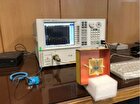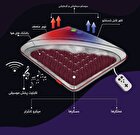Spinal Cord Injury Treatment via Using Mesenchymal Stem Cells

"Encapsulation of trabecular mesenchymal stem cells containing miR-7 using a microfluidic system with the aim of treating the spinal cord injury in rats" is the title of research project that Parvin Mohammadi carried out as her Ph.D dissertation under the supervision of Samad Nedri and with the support of Iran National Science Foundation (INSF).
She said that the spinal cord injury could happen in accidents such as car accidents and sport accidents or falling down from height or as a result of gunshot wounds.
The researcher further said that spinal cord injuries are divided into primary and secondary injuries. She added that most spinal cord injuries come from a sudden, traumatic blow to the vertebrae. The fractured (broken) bones then damage the spinal cord and its nerves. In rare cases, an injury can completely sever, or split, the spinal cord.
Mohamadi further noted that a damaged spinal cord can affect people’s movements and the body loses many essential functions.
The researcher said that a complete injury may cause paralysis of all four limbs (quadriplegia) or the lower half of the body (paraplegia).
She added that after an incomplete injury, some function remains on one or both sides of the body, but the body and brain can still communicate along certain pathways.
She went on to say that recent advances in stem cell-based therapeutic technologies have yielded promising results for the treatment of spinal cord injuries.
She added that mesenchymal stem cells (MSCs) due to its excellent properties have proven effective in spinal cord injury repair.
"One of the new methods for encapsulating cells is the use of microfluidic systems, the advantages of which include the need for a low amount of materials and solutions, accurate control of environmental conditions, the possibility of creating concentration gradients for cells and polymers, and rapid delivery of materials to cultured cells," she added.
“For that reason, in this research, we tried to obtain the know-how of trabecular mesenchymal cell transduction of the eye as a new source of stem cells with Mir-7 and achieved a relatively new method of encapsulating the desired cells with a microfluidic system in vitro study,” Mohammadi concluded.
4155/i





















